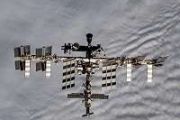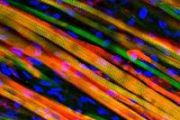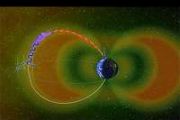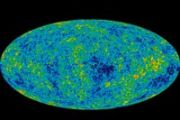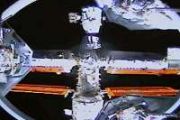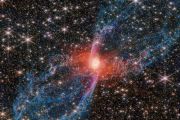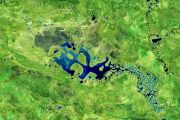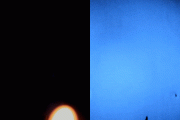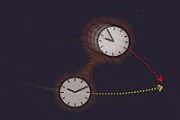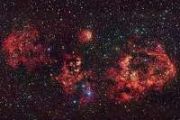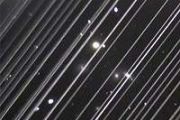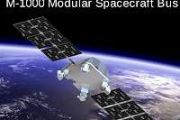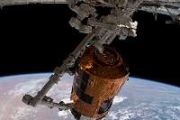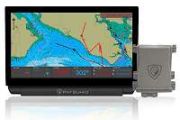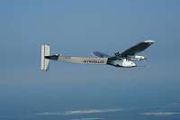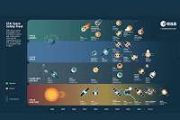
Copernical Team
Voyager completes ExoTerra acquisition advancing US space propulsion systems
 Voyager Technologies has announced the acquisition of ExoTerra Resource, a developer of electric propulsion systems for space operations. The move aims to address gaps in propulsion capabilities for both defense and commercial markets within the United States.
Voyager Technologies has announced the acquisition of ExoTerra Resource, a developer of electric propulsion systems for space operations. The move aims to address gaps in propulsion capabilities for both defense and commercial markets within the United States. Europe turns to space to boost resilience

The role of space for security was presented at a high-level event in Brussels on Tuesday.
The Red Spider Nebula, caught by Webb
 Image:
The Red Spider Nebula (Webb)
Image:
The Red Spider Nebula (Webb) Engineers test photonic AI chips in space
This request seems a bit unusual, so we need to confirm that you're human. Please press and hold the button until it turns completely green. Thank you for your cooperation!
Press and hold the button
If you believe this is an error, please contact our support team.
185.132.36.159 : 5ffb1d2b-bc60-4d87-87ab-73a4649e
Watch live: Sentinel-1D launch on Ariane 6

The Copernicus Sentinel-1 mission is about to get its fourth satellite, with Sentinel-1D now ready for liftoff. Launch will take place with an Ariane 6 rocket from Kourou, French Guiana and live coverage will be shown on Tuesday, 4 November, at 22:02 CET (18:02 at Kourou).
Hurricane Melissa barrels through the Caribbean
 Image:
This image captured by the Copernicus Sentinel-3 mission show Hurricane Melissa as it barrelled through the Caribbean Sea
Image:
This image captured by the Copernicus Sentinel-3 mission show Hurricane Melissa as it barrelled through the Caribbean Sea ESA establishes presence in Tokyo to strengthen strategic partnership with Japan

The European Space Agency has announced it is establishing a new presence in Tokyo, Japan, its first in Asia.
Requtech commences Ka-band SATCOM hub upgrade as part of European retrofit expansion
 Requtech AB has introduced its SATCOM hub retrofit program, initiating with a comprehensive Ka-band upgrade for a NATO country and collaborating closely with a major hub operator. The company aims to expand its capabilities by supporting the modernization of SATCOM hubs throughout Europe and beyond, transitioning from expertise in advanced antenna systems to providing end-to-end infrastructure s
Requtech AB has introduced its SATCOM hub retrofit program, initiating with a comprehensive Ka-band upgrade for a NATO country and collaborating closely with a major hub operator. The company aims to expand its capabilities by supporting the modernization of SATCOM hubs throughout Europe and beyond, transitioning from expertise in advanced antenna systems to providing end-to-end infrastructure s China aims to lead international space science with new discoveries
 China is rapidly evolving from a user of space technology into a key driver of global scientific discovery, according to Wang Chi, academician at the Chinese Academy of Sciences and director of its National Space Science Center.
Following the launch of a comprehensive space science plan for 2024-2050, China has marked important milestones such as pivotal experiments aboard its national spa
China is rapidly evolving from a user of space technology into a key driver of global scientific discovery, according to Wang Chi, academician at the Chinese Academy of Sciences and director of its National Space Science Center.
Following the launch of a comprehensive space science plan for 2024-2050, China has marked important milestones such as pivotal experiments aboard its national spa Long March 5 rocket achieves breakthrough as tallest launch vehicle in Chinese space history
 China successfully launched a Long March 5 carrier rocket on Thursday evening, deploying the Communications Technology Demonstrator 20 satellite from the Wenchang Space Launch Center in Hainan province at 10:30 pm. The mission was conducted by China Aerospace Science and Technology Corp, the nation's principal space contractor.
The Long March 5, developed by the China Academy of Launch Veh
China successfully launched a Long March 5 carrier rocket on Thursday evening, deploying the Communications Technology Demonstrator 20 satellite from the Wenchang Space Launch Center in Hainan province at 10:30 pm. The mission was conducted by China Aerospace Science and Technology Corp, the nation's principal space contractor.
The Long March 5, developed by the China Academy of Launch Veh 


